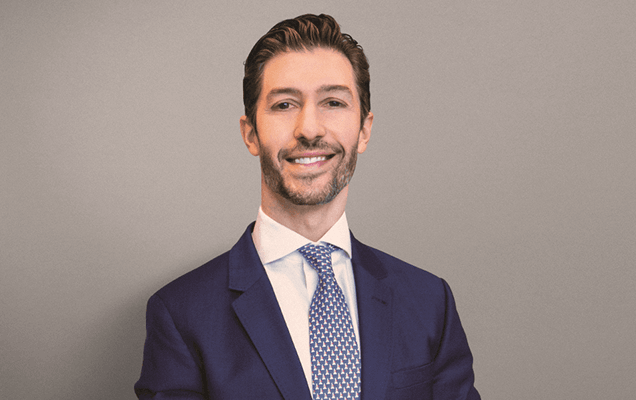Following a diagnosis of brainstem glioma, chances are you have wondered about your treatment options, how your glioma developed and what the outlook is for adult patients with brainstem glioma. While your doctor is the best person to address your individual prognosis, the following information will give you a better idea of the treatment options available, as well as the current brainstem glioma survival rate in adults.
Overview of Brainstem Glioma
Gliomas are tumors that arise from a group of cells within the brain known as glial cells. There are different types of glial cells, each of which provides important support functions to the brain. Brainstem gliomas can be made up of glial cells called astrocytes, oligodendrocytes or a mix of cells, and they occur in the brainstem, an area at the back of the brain where many of the body’s functional control centers are located, such as those responsible for breathing.
Brainstem gliomas occur most frequently in children but can develop in patients at any age. Though they are relatively rare in adults when they do occur it tends to be when the patient is in their thirties. Symptoms depend on the size and location of your tumor but may include headaches and problems with functions that are controlled in the brainstem, such as walking.
Current Brainstem Glioma Treatment Options
For most brain tumors, the first step in treatment is typically surgical resection, or removal, of as much of the tumor as possible. Unfortunately, because the brainstem is a small, delicate area packed with vital anatomy, sometimes surgical resection is not an option for brainstem glioma patients. Depending on the size and location of your tumor, as well as personal health factors such as age, your doctor may or may not include surgery as part of your treatment plan.
The other typical treatment options include radiation therapy and chemotherapy. Again, depending on your individual condition, your doctor may recommend one or the other, though a combined approach is often used to treat brain stem glioma. Radiation and/or chemotherapy may be used as the primary treatment approach, or it may be used as an adjunct following surgery to ensure all of the tumor cells have been eradicated.
There are different forms of radiation therapy, including whole-brain radiation therapy, which delivers multiple low doses of radiation to the entire brain, and stereotactic radiosurgery, which delivers a highly focused beam of radiation directly to the tumor. Your doctor will determine which form of treatment is most appropriate depending on your individual tumor and radiation tolerance.
The form of chemotherapy most commonly used in the treatment of brain tumors is temozolomide (Temodar), a pill that is taken once a day. It tends to be well-tolerated, with few side effects and is usually taken for a minimum of six weeks. Patients will often be prescribed temozolomide at the same time as radiation therapy, either following surgery or as the first-line treatment.
We are more than surgeons,
we are your support system.
Brainstem Glioma Survival Rate in Adults
Brainstem gliomas occur more frequently in children than adults, representing less than 2 percent of gliomas in people over 16. However, though they are rarer in adults, the tumors tend to be less aggressive and carry a better prognosis. The current brainstem glioma average survival in adults is approximately 44-74 months. This means that many adults diagnosed with brainstem glioma live that much longer following diagnosis.
The great news is that the brain stem glioma survival rate in adults is improving. Every day, researchers and clinicians are exploring new technologies and improving available treatment options. Many people may not realize that there constantly clinical trials examining new medications and treatment methods. As new options emerge, doctors have more tools available to treat brain stem glioma, each improving survival rates even more.
Brainstem Glioma Treatment at Neurosurgeons of New Jersey
The doctors at Neurosurgeons of New Jersey value your treatment needs as an individual, practicing a patient-centric focus when delivering treatment. Your brainstem glioma may be most effectively treated using surgery, while the next person may not be an appropriate surgical candidate. By considering every patient on a one-by-one basis, the doctors of Neurosurgeons of New Jersey provide individualized medicine based on your specific needs.
Additionally, with strong academic ties, Neurosurgeons of New Jersey’s doctors are at the forefront of research and technology, bringing evidence-based practices into daily care. This allows each patient to receive the most effective treatment based on individual health factors, rather than a “one size fits all” approach that is commonly practiced elsewhere.
A Positive Future Outlook
Thanks to dedicated researchers and advances in technology, the brain stem glioma survival rate in adults is on an upward trend and will continue to climb as new treatment options emerge. Clinical trials and patient experiences all contribute to clinicians’ knowledge base, and the outlook is constantly improving.
If you still have questions regarding your brain stem glioma treatment or specific prognosis, be sure to bring them up with your personal doctor. He or she is the best person to give you information about your individual condition based on your actual tumor and particular health factors.

About Dr. Paul R. Gigante
Dr. Paul Gigante is an accomplished neurosurgeon in Central Jersey and a proud member of Neurosurgeons of New Jersey, practicing out of their Livingston office located conveniently on South Orange Avenue. He is recognized as a leading spine surgeon for both minimally invasive and complex procedures. Dr. Gigante is a graduate of Harvard Medical School and completed his fellowship at Stanford University in functional neurosurgery. His specialties are deep brain stimulation for Parkinson’s Disease and other nervous system disorders, spinal cord stimulation for chronic pain disorders, and surgical treatments for chronic nerve pain conditions. He also specializes in brain tumor surgeries. Dr. Paul Gigante is currently accepting new patients.
Recent Posts:






